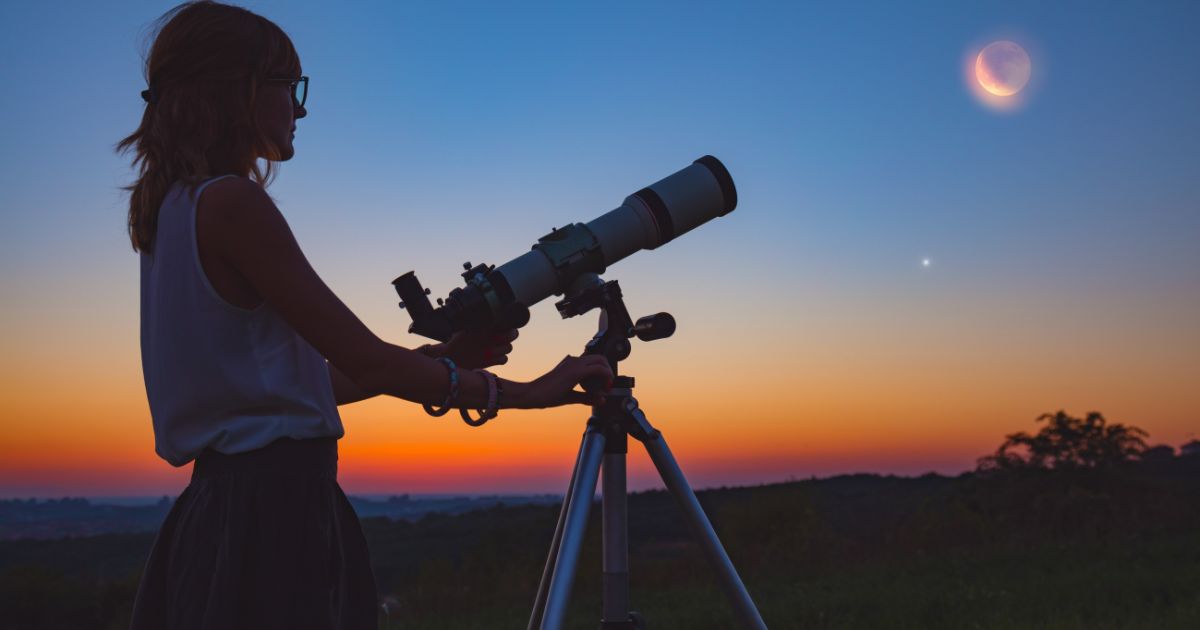For guidance on reading the tables for beginners – please go here
In January the Sun sets early in the evening, so the sky is dark enough for observing the fainter celestial objects by 8pm local time. One the 1st of January, the dark evening sky has two of the most prominent planets in the sky – Saturn in the southwest and Jupiter high in the southeast. At 8 pm, they rival the brightness of the bright star Sirius just rising in the southeast.
At about 18:30 (dinner time) the band of the Milky Way arcs across the sky from the northwest to the northeast and crosses our meridian almost overhead. Throughout the night it will tilt further to the west.
Projecting a line from Jupiter to Saturn forms the plane of our solar system – the ecliptic plane. We can easily see that our solar system is tilted with respect to the Milky Way. It is also tilted with respect to our terrestrial coordinate system of longitude and latitude. These various angles make the night sky an ever-changing display of stars, planets and the Milky Way.
Although cold, it is a good time to start observing since the Moonlight that would otherwise washout the fainter celestial objects won’t rise until around 22:30. But when it does, its gibbous phase will be a fine target to view with binoculars and the telescope.
NOTABLE EVENTS
Jan 1 Andromeda Galaxy overhead at 6pm
Jan 2 Star Sirius rises in SE at 7:30pm
Jan 3 Last Quarter Moon 22:30, Quadrantid Meteors
Jan 11 New Moon 06:57
Jan 12 Mercury at maximum morning Elongation
Jan 17 First Quarter Moon 22:53
Jan 20 Sun enters Capricornus
Jan 25 Full Moon 12:51

Main Meteor Showers
Meteor showers are best observed after midnight when our hemisphere is ploughing into the meteor stream. Although the duration of the most active portion of the shower is short, some shower meteors can be seen many days on either side of maximum.
There are about a dozen significant meteor showers each year. This is a list of only the three major ones that have different “characters”.
The Quadrantids radiate from an area 20-degrees east of the Big Dipper’s handle. The short duration for the shower is somewhat balanced by the possible bright “fire balls” that are produced. Meteor showers are best after midnight. However the last quarter Moon rises at about 23:30.
This makes this year only marginal for observing the fainter meteors of this shower.
The Perseids are the premier shower of the year. Its long duration will bridge cloudy nights. We have the first quarter Moon this year that will set about 11 pm leaving the rest of the night dark for meteor observing.
The fainter Geminids meteors will be “washed out” by the full Moon, so this will be an un-favourable year.

Dates for the Phases of the Moon

Entries are in Eastern Time and only require time zone correction. Do not use the correction from the “Ottawa-Time” table. Saskatchewan and parts of BC and Ontario do not use daylight savings. In these regions, subtract 1-hour from these times from March 10 to November 3.
Planetary Configurations
When at Opposition, planets will appear on the opposite side of the sky from the Sun – very roughly on the meridian at midnight. Conjunctions are when the planet has the same “longitude” as the Sun. A Superior Conjunction is when the planet is on the other side of the Sun, and an Inferior Conjunction is when it is between the Earth and the Sun. Only Mercury and Venus can be at Inferior Conjunction. Maximum elongation is when Mercury and Venus appear farthest from the Sun in our sky. This occurs either in our morning eastern sky (mor.) or our western evening sky (eve.). Do not apply the Ottawa-correction times to the times in this table.

* Not possible for this planet
– Does not occur this year
Prominent Constellations by Seasons


Brightest Stars

One of Canada’s foremost writers and educators on astronomical topics, the Almanac has benefited from Robert’s expertise since its inception. Robert is passionate about reducing light pollution and promoting science literacy. He has been an astronomy instructor for our astronauts and he ensures that our section on sunrise and sunset, stargazing, and celestial events is so detailed and extensive it is almost like its own almanac.













